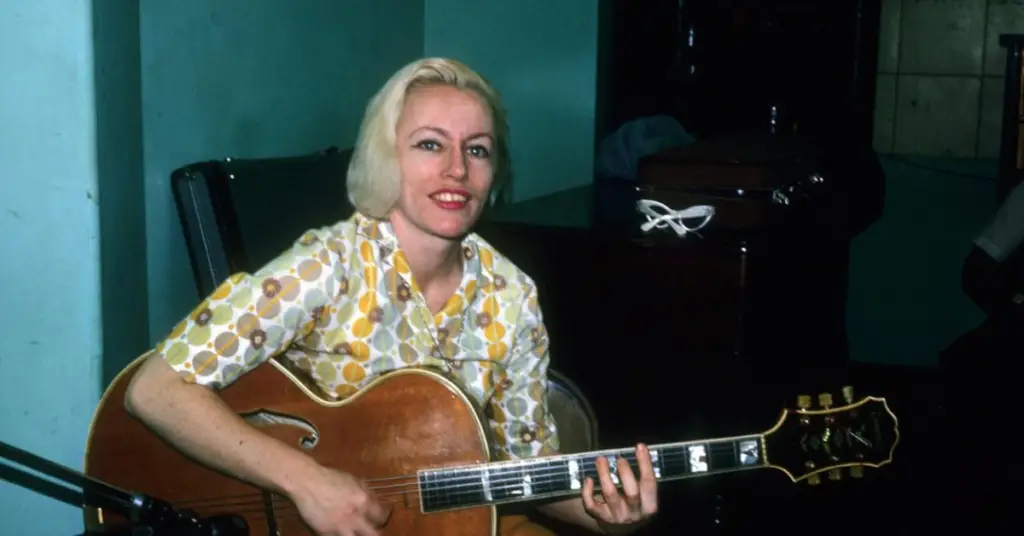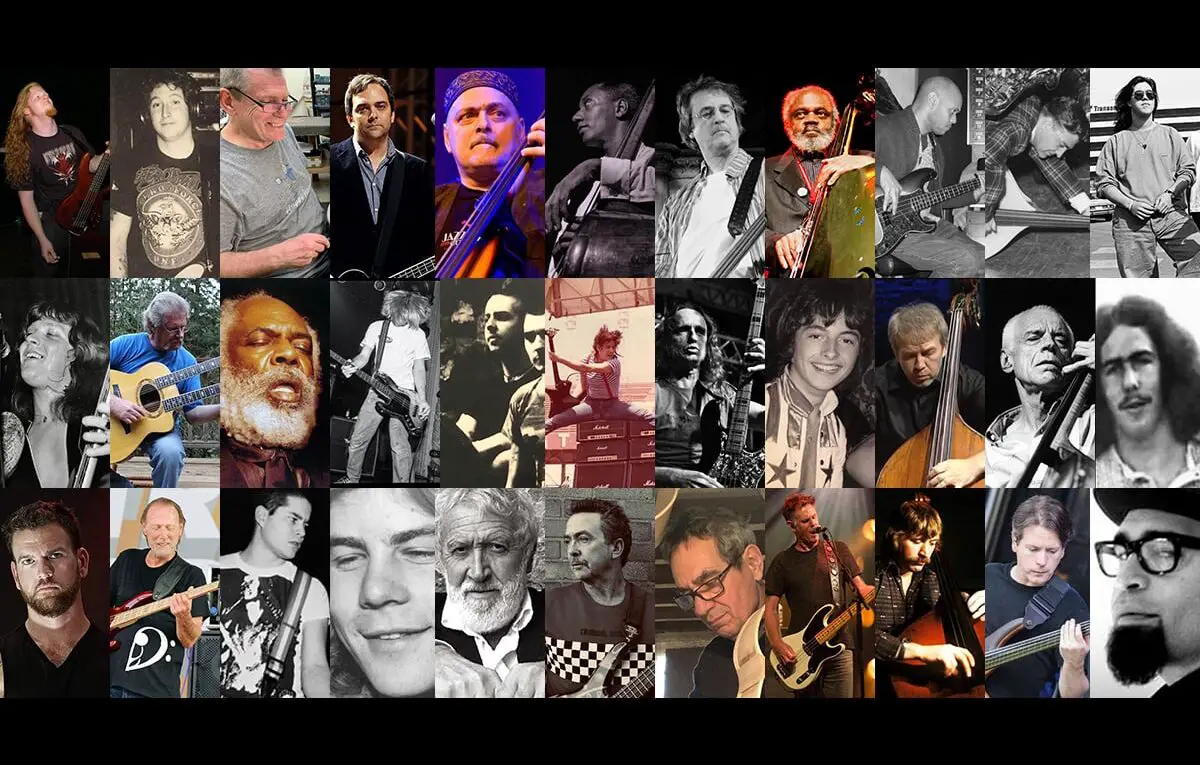The Best 1960s Bassists Of All Time Ranked
With the explosion in popularity of rock music in the 1960s, many more manufacturers began making electric basses, including Yamaha, Teisco and Guyatone. Introduced in 1960, the Fender Jazz Bass, initially known as the “Deluxe Bass”, used a body design known as an offset waist which was first seen on the Jazzmaster guitar in an effort to improve comfort while playing seated. The J-bass features two single-coil pickups. Providing a more “Gibson-scale” instrument, rather than the 34 inches (864 mm) Jazz and Precision, Fender produced the Mustang Bass, a 30-inch (762 mm) scale-length instrument. The Fender VI, a 6 string bass, was tuned one octave lower than standard guitar tuning. It was released in 1961, and was briefly favored by Jack Bruce of Cream. Gibson introduced its short-scale 30.5-inch (775 mm) EB-3 in 1961, also used by Bruce. The EB-3 had a “mini-humbucker” at the bridge position. Gibson basses tended to be instruments with a shorter 30.5″ scale length than the Precision. Gibson did not produce a 34-inch (864 mm)-scale bass until 1963 with the release of the Thunderbird. The first commercial fretless bass guitar was the Ampeg AUB-1, introduced in 1966. In the late 1960s, eight-string basses, with four octave paired courses (similar to a 12 string guitar), were introduced, such as the Hagström H8. Here are the best 1960’s Bassists ranked.
See more: The Best Prog Rock Drummers Of All Time Ranked
See more: The Best Prog Rock Bassists Of All Time Ranked
13. Jack Bruce

“Jack is the master. His incredible playing and ground-breaking sounds have influenced many of the other bass players listed here. His constant growth and change and adaptation to new ideas is apparent in everything he plays. His song writing and collaborations are always unique, powerful, and intriguing. And he’s still playing in many different venues and bands. Spectrum Road, his tribute band to Tony Williams, has won best jazz album of 2012 from many p15ublications. The ‘old soul’ of the bass.”
12. Geezer Butler

“Geezer Butler is one of the great riff-meisters in rock, the main writer of a lot of Black Sabbath’s music, and a creator of the heavy-metal bass template: play only what’s absolutely necessary but play it like there’s no tomorrow. While others quietly supported the groove, Butler turned the bass into a blunt instrument.”
11. John Entwistle

“The legendary Who bassist played many different bass models throughout his career, but during the 1960s Entwistle played mainly Fender Jazz and Precisions. Known for his very busy and treble heavy style, John was a key component to the Who’s massive sound. A particular early Who highlight is Entwistle’s fantastic bass solo on “My Generation.” The melodic, powerful lead bass style that John established early in his career has had a huge impact on all kinds of bass players.”
10. Chris Squire

“Chris Squire took bass guitar to a level it never was. He combined power, counterpoint, rhythmic precision, timbre and sound contrast, he was innovative almost in every field. He’s the mastermind of great riffs and bass parts like “No Opportunity Necessary”, “Heart of the Sunrise”, “The Fish”, “Close to the Edge” Besides he was a brilliant composer, his solo album “Fish out of Water” is among the greatest of the era with superb use of the symphony orchestra.”
9. Paul McCartney

“A lot of people may not really realize this, because the Beatles genius songwriting and general creativity sometimes dwarf other aspects of their music. But you have to see, that behind those brilliant songs was a bass player who could connect the most abstract of chords, using his intricate melodies. Most bass players just sit up there and slap out the basic chord progression. Paul’s baselines on the other hand are constantly moving all over the spectrum, changing octave, playing small arpeggios, and adding flare and groove to the song.”
8. John Paul Jones

“First of all, his licks were tastefully done to compliment the song he was playing on. Virtuosity among other things was a major bonus with John Paul Jones how many other bass could achieve his virtuosity. Not to mention being well versed on the keyboards, Mandolin, acoustic guitar, basically in a band where every song they ever made was great or creative. Every player must be great.”
7. Mel Schacher

“Although Grand Funk Railroad was just rising into fame by the end of the 1960’s, it doesn’t exclude Mel Schacher from the list. His sound was described as something that of proto-metal, with a heavy, distorted quality, giving off just a dose of psychedelia from the progressions. Along with the dirty, gritty guitars and vocals, Schacher’s own bass playing stands out amidst the muddled chaos. A true progenitor to classic rock.”
6. Jaco Pastorius

“Jaco Pastorius used every minute of the short time he had to expand the technical and dramatic possibilities of the bass, giving his various clients – Joni Mitchell, Pat Metheny, and even Ian Hunter – more than they bargained for. Despite his overlooked status, Pastorius regularly introduced himself as the greatest electric bass player in the world, and we’re not going to argue.”
5. James Jamerson

“James Jamerson was not only the best, funkiest, most talent bassplayer ever, but he reinvented the way the instrument was played and its role in pop music. Said to have “a metronome in his head” by fellow musicians from the Funk Brothers Band, the guys behind all of Motown greatest hits, his use of intervals, complex timing and impressive tone and precision make him on of the most influential and most successful musicians of all time
4. Donald “Duck” Dunn

“Booker T And the MGs’ bass player may be the least flashy player on this list of the best bassists of all time. Though he was a big guy, you could barely see the Duck’s fingers move on the strings, even when he was playing with rockers like Neil Young or Eric Clapton. But he always kept it moving, and his time was always tight.”
3. Carol Kaye

“The most recorded bass player in history, Kaye started out as a guitarist who had to fill in one day for a bassist who didn’t show up for a session. Carol became the main session bassist at Capitol Records in Los Angeles and recorded on thousands of songs, film scores, T.V. themes, and commercials.”
2. Joe Osborn

“Though not many have heard of Joe Osborn, I can guarantee they’ve heard his bass playing. Joe has played on thousands of tracks during his long session career including several top hits and gold records.”
1. Jerry Jemmott

“Another hugely influential bassist that many do not know about, Jemmott started his career with Atlantic records in the mid ’60s. Recording with Aretha Franklin, Ray Charles, B.B. King, Chuck Berry, King Curtis, and many other legends of soul and blues, Jerry has laid down some of the nastiest, funkiest grooves you’ll ever hear.”

